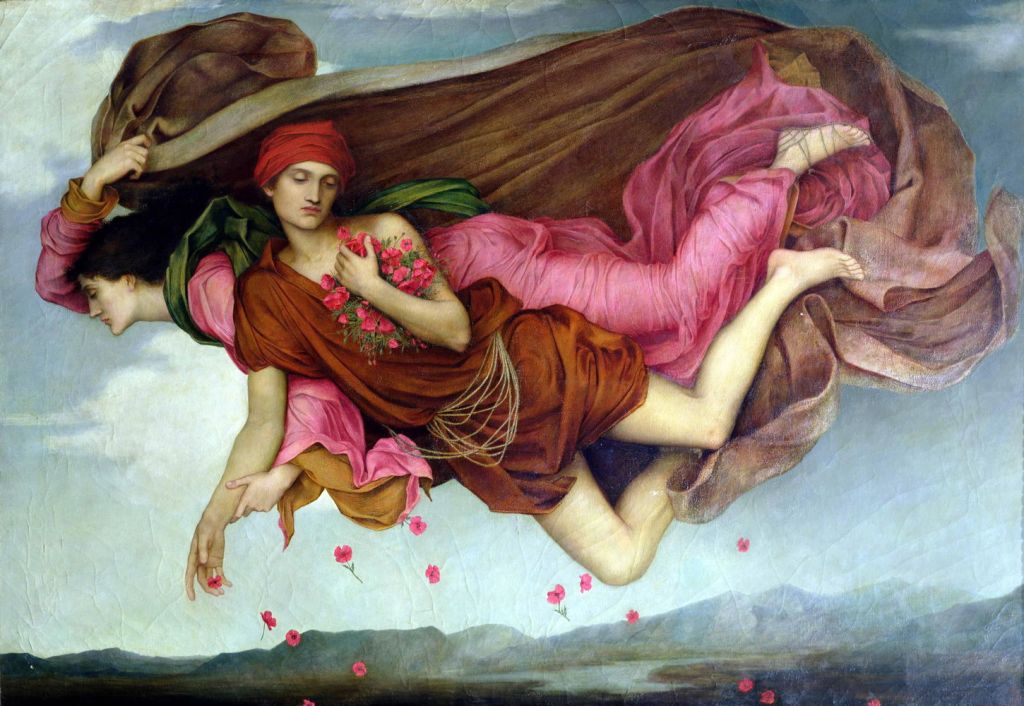Evelyn De Morgan (1855–1919) was one of the most prolific and accomplished narrative painters, of the late nineteenth and early twentieth centuries in Europe and North America. Throughout her full career as an artist, she painted in a distinctive Pre-Raphaelite style. Yet even today, her work is often omitted from consideration with other Pre-Raphaelite art.
Mary Evelyn Pickering was born into a wealthy upper-middle class family in London. Her father was friends with William Gladstone, who was to become Prime Minister, and she was introduced to art by her mother’s brother, Roddam Spencer-Stanhope, who was one of the first-generation Pre-Raphaelites. He introduced her to the Rossettis, Watts, Holman Hunt, and others.
Her family envisaged her learning to draw and paint as an accomplishment expected of a well-educated woman, and she was very well educated – not only in arts, but in the classics and more. However, she started to see this not as a set of social skills to aid her future marriage, but as a professional career.
In 1872, at the age of only 17, she started to attend the newly-formed South Kensington National Art Training School (now the Royal College of Art) in London. But she quickly gained a place at the Slade, where she was taught by Sir Edward Poynter, starting there in January 1873. Her style developed rapidly during her time studying there, until she left in 1876.

De Morgan’s paintings are rich with angels, and The Angel with the Serpent (c 1870-75) must be one of her earliest and most enigmatic winged creatures. An androgynous angel with rose red wings sits, right knee drawn up by his right arm, his left hand caressing a long green snake, whose tongue flickers out at the angel’s lips. Behind them is a low bank of dog roses (Rosa canina), and some low speedwells (Veronica spp.). This overlooks a broad river, with rugged rocks and a distant volcanic cone.
I have been unable to find any textual reference which might explain this painting, and therefore can only take it as an expression of a clearly delicate relationship between the forces of good (the angel) and those of evil (the serpent), perhaps inspired by Milton’s Paradise Lost. Painted mainly during her training at the Slade, it gives a good idea of her skill, and her influence by Pre-Raphaelites and Botticelli.
Although the dates aren’t clear, she started to visit Italy in 1875, and at one stage travelled alone to Rome, Perugia, and Assisi. She also stayed with her uncle, Roddam Spencer-Stanhope, in his newly-purchased villa near Florence, where she visited the Uffizi and fell in love with the work of Botticelli. She sold her first painting in 1875, and the following year her painting Catherine of Alexandria was shown in the Dudley Gallery, London.
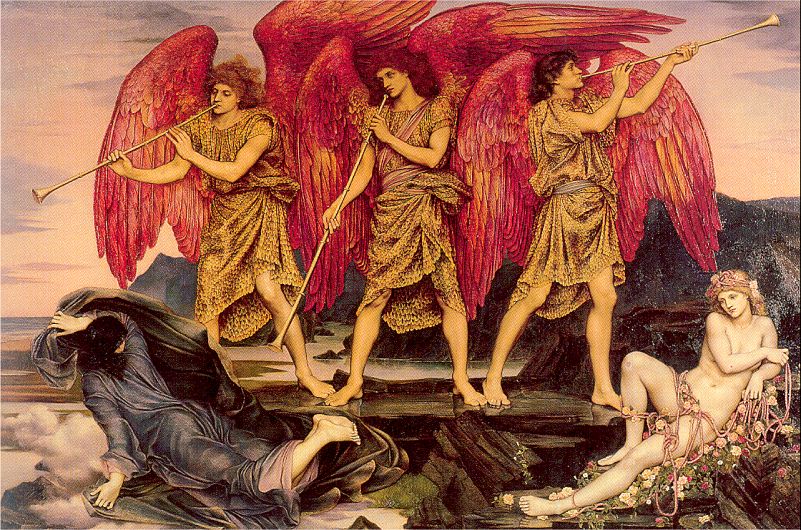
In her Aurora Triumphans from about 1876, the Roman goddess of the dawn, Aurora, reclines at the lower right, the shackles of the night shown as roped roses. At the lower left, Night is flying away in her dark robes. Above them, three winged angels resplendent in their golden tunics sound the fanfare bringing day. Aurora is triumphant in dispelling Night.
The two key figures in this simple narrative are placed in static positions as if in a tableau, as was common in Pre-Raphaelite narrative painting. De Morgan transforms this with the addition of the angels, which dominate the scene and almost add sound.
This painting also has an interesting history. First exhibited at the Grosvenor Gallery in London, it seems to have gone into a private collection until coming onto the market in about 1922. At that time, De Morgan’s signature had been overpainted with that of Burne-Jones. It was on the strength of that that it was purchased for the Russell-Cotes Museum in Bournemouth, where it now is, unveiled as one of Evelyn De Morgan’s paintings instead.

Her Cadmus and Harmonia was painted in 1877, following a visit to Italy. What inspired her to paint this unique work is obscure, but it was exhibited with the following quotation from Ovid’s account of this myth in an English translation of his Metamorphoses:
With lambent tongue he kissed her patient face,
Crept in her bosom as his dwelling place
Entwined her neck, and shared the loved embrace.
It has been suggested that Harmonia is here reminiscent of Botticelli’s Venus, a painting which De Morgan knew well, as she had copied it when she was a student. She certainly doesn’t seem to have been influenced by any earlier image of the story, but her Harmonia is certainly not the older woman that Ovid describes.

In 1877, she tackled the popular myth of Ariadne in Naxos, envisaging her alone on the beach. It’s possible that Ariadne had slept there, in the large brown blanket still wrapped around her legs, but there’s now no trace of her former husband Theseus – not even a sail on the horizon.

The following year, in her Night and Sleep, two figures fly through the air, from right to left. The further figure is a young woman (probably) wearing long red robes, her eyes closed, clutching a large brown cloak with her right hand. That cloak floats above the couple. Her left arm is intertwined with the right arm of what is probably a young man, who wears shorter brown robes. He also has his eyes closed. He clutches a large bunch of poppies to his chest with his left arm, while his right scatters them, so that they fall to the ground below.
Although it has been stated that this painting was inspired by the flight of Zephyr and Chloris in Botticelli’s Birth of Venus (c 1486), I think that may have been largely compositional. With her thorough classical education, De Morgan is very likely to have recalled one of Virgil’s most famous lines, from his Aeneid Book 4, line 486:
hinc mihi Massylae gentis monstrata sacerdos,
Hesperidum templi custos, epulasque draconi
quae dabat et sacros servabat in arbore ramos,
spargens umida mella soporiferumque papaver.
haec se carminibus promittit solvere mentes
quas velit, ast aliis duras immittere curas…
From thence is come
a witch, a priestess, a Numidian crone,
who guards the shrine of the Hesperides
and feeds the dragon; she protects the fruit
of that enchanting tree, and scatters there
her slumb’rous poppies mixed with honey-dew.
Her spells and magic promise to set free
what hearts she will, or visit cruel woes
on men afar.
(From Perseus at Tufts University)
Spargens umida mella soporiferumque papaver is conventionally translated as “scattering moist honey and sleep-inducing poppy”, and describes well the effects of the opiate drugs derived from opium poppies, which were popular – and readily obtainable – at the time.
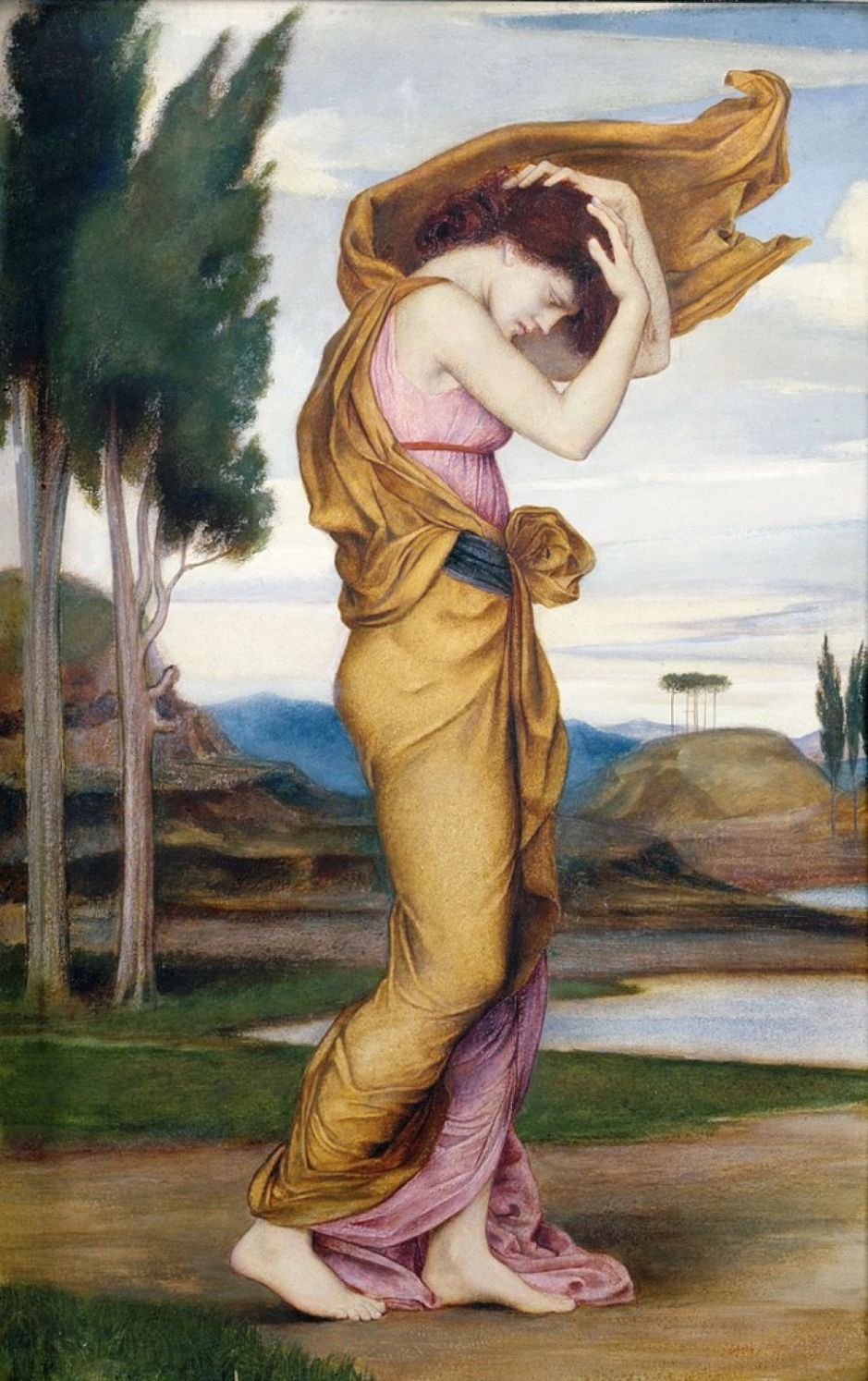
De Morgan’s painting of Deianira from about 1878 almost certainly refers to Ovid’s account of her in his Heroides, forming a link back to Ariadne. This princess married Heracles/Hercules, and the centaur Nessus tried to abduct her. When Heracles killed the centaur, the latter tricked Deianira into applying his toxic blood to her husband’s skin by means of a tunic, in revenge.
Hearing the news of Hercules’ death in the midst of writing her letter to him, Deianira had but one option: suicide. With Hercules a god, and even Iole being cared for by Hercules’ son, Deianira was left alone, to die by her own hand.
Although classical myths were the mainstay of De Morgan’s narrative painting for much of her career, she referred to other sources too.
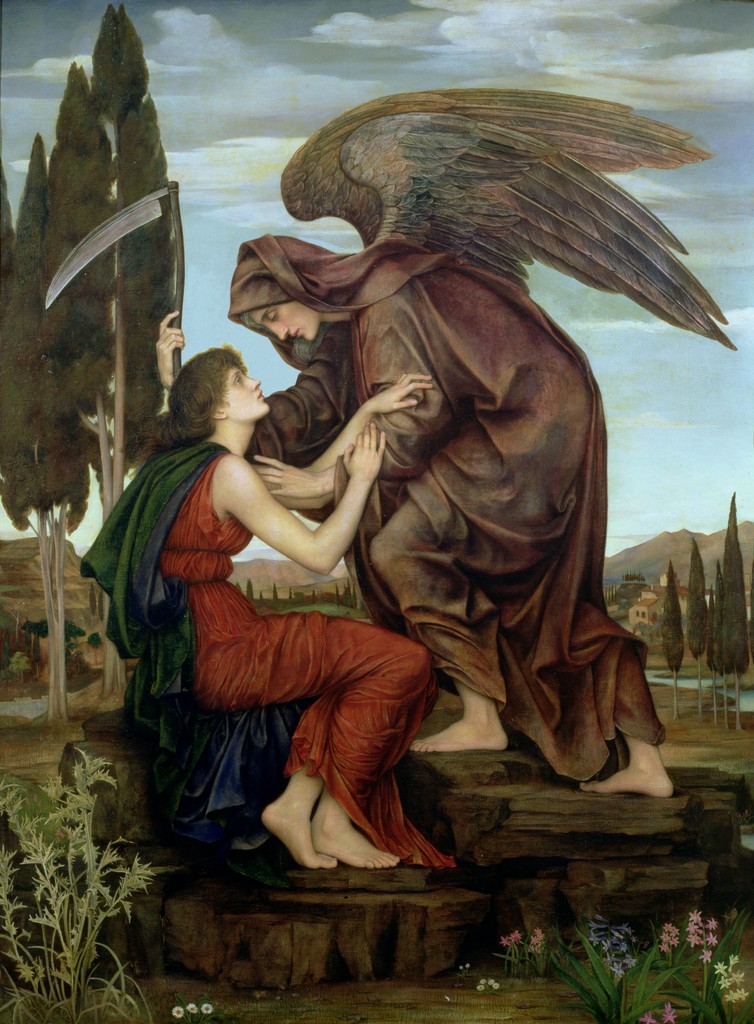
One of three similar paintings made by De Morgan, this shows an androgynous Angel of Death (1880), holding in their right hand the scythe so feared by us all, comforting a seated young woman. The landscape at the left of the painting appears dry and barren, with just three daisy flowers visible. That to the right of the angel is better watered, more fertile, and has richer flowers. This has been interpreted as indicating that the woman’s past was tough, but that her imminent death will offer her a better future.
Drawmer quotes a poem written by De Morgan when she was about twelve, titled the Angel of Death:
My love lies deep
Under the ground;
The winter winds
Blow cold around
The cypress tree
Is crowned with snow
Shrouded in white
The graves lie low,
Soft thy kisses
Warm thy breath
Vision of Love –
Angel of Death!
Although this painting is not set in the same winter, it expresses the same spiritualist view that death is to be welcomed, not feared.
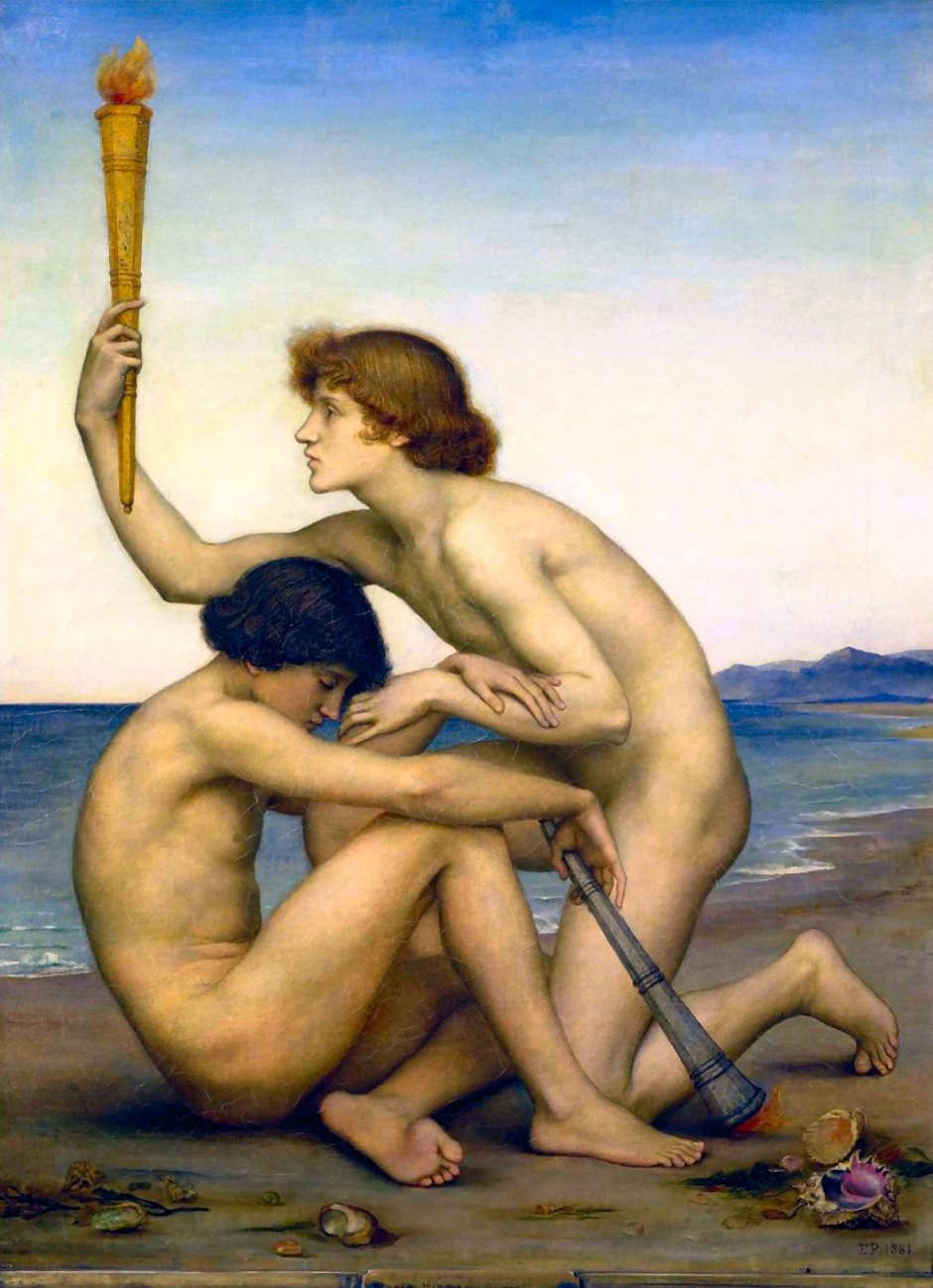
The sophistication of De Morgan’s narratives are shown well in her Phosphorus and Hesperus from 1881. Phosphorus, in its original Greek Φωσφόρος, is the morning star, normally taken to mean the planet Venus when it is bright in the dawn sky. In Latin, it became Lucifer, the bringer of light, and its later associations the devil. Hesperus, or Ἓσπερος, is the evening star, the planet Venus seen bright in the evening sky. In Latin, it became Vesper. Although the Greeks came to realise that they were the same celestial body, they maintained separate legendary figures.
De Morgan shows Phosphorus rising, his torch held up in the air, while the intertwined Hesperus has fallen asleep, and his torch has dropped onto the ground, its flame guttering. Today, two naked bodies with their arms and legs intertwined might easily be read in homoerotic terms, but there is no evidence that this was the artist’s intent.
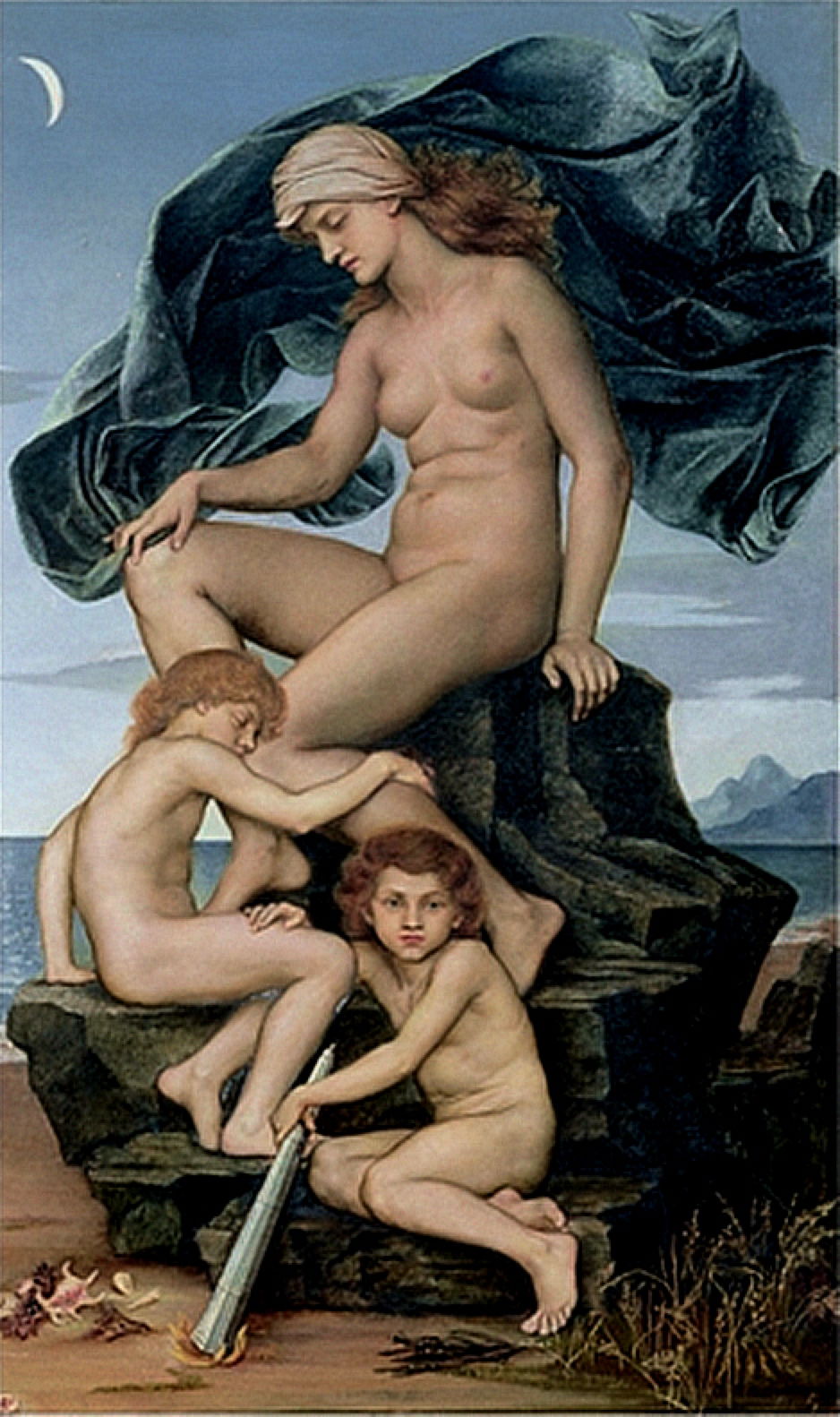
She painted this family group of Sleep and Death, the Children of the Night in 1883, showing mother Nyx (night) with her children Hypnos (sleep) and Thanatos (death).
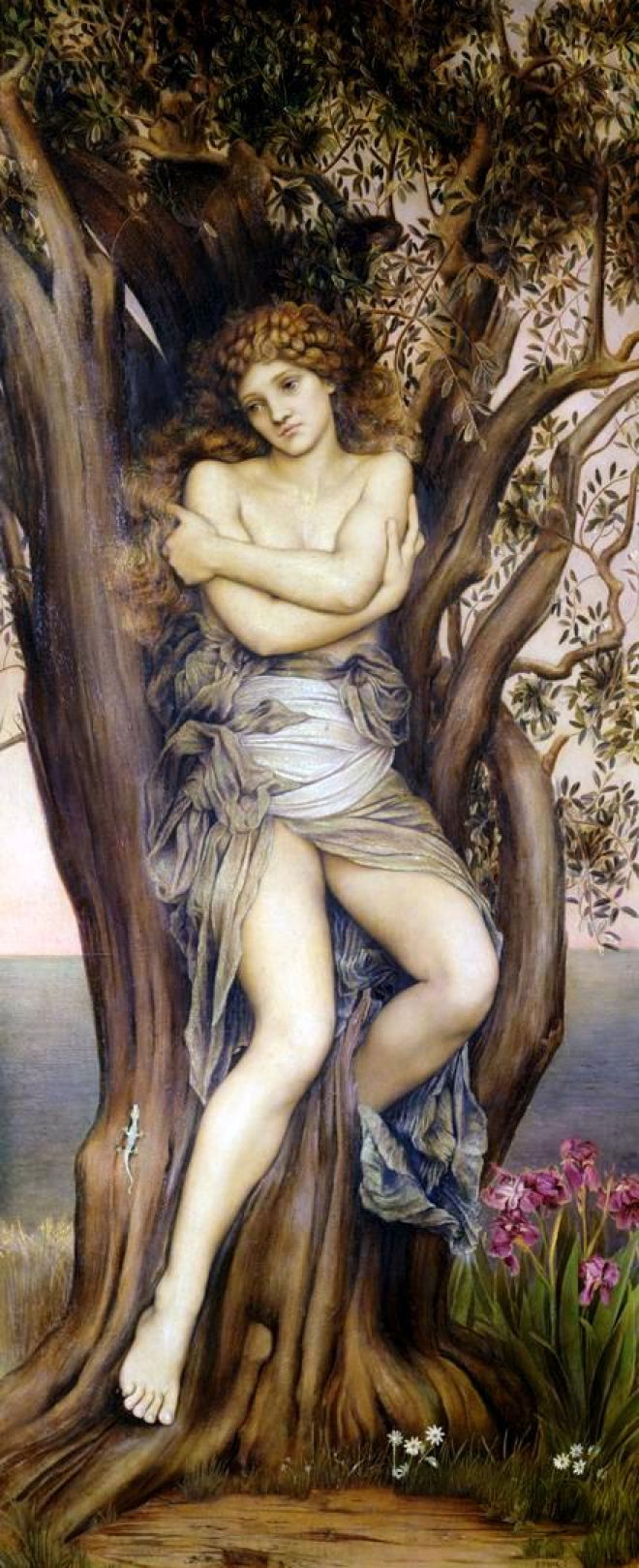
De Morgan’s The Dryad (1884-85) looks worryingly sad and lonely, as she stares into the distance from within the trunk of her ancient ash. There are delightful details too: the flowers at the foot of the tree, a cat and a bird in its branches, and a pale lizard beside the Dryad’s right leg.
Evelyn set up her studio in Chelsea, London, in the early 1880s, and in 1887 married the ceramicist William De Morgan. His work was largely inspired by eastern imagery, which came to influence hers too. Her husband’s father was a professor of mathematics at University College London, and close friends with many of the leading intellectuals, include critic John Ruskin, philosopher JS Mill, Lady Byron, and the social reformer Elizabeth Fry. Her husband’s parents were also ardent campaigners for new educational establishments, and instrumental in the foundation of Queen’s and Bedford Colleges for women.
From the time of their marriage, the De Morgans were spiritualists. Although this may appear odd today, many Victorian intellectuals were fascinated by such matters. The couple practised automatic writing in the form of a long-running empirical quasi-scientific experiment, publishing a book on their experiences.
In tomorrow’s article, I will conclude by looking at a selection of paintings from the later years of her career.
References
Wikipedia.
De Morgan Foundation and Collection.
Drawmer, LJ (2001) The impact of science and spiritualism on the works of Evelyn De Morgan 1870-1919, PhD thesis, Buckinghamshire New University. Available here.

